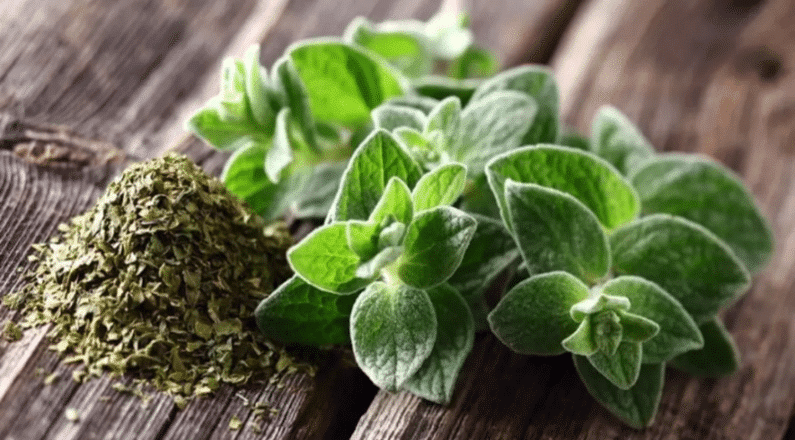Origanum vulgare L. subsp. hirtum (Link) Iestwaart of Labiatae Family
Morphology: It is a strongly aromatic, perennial poa, with erect and deciduous stems at the base, up to 80 cm tall. The leaves are sparsely or densely hairy, elliptic, or almost rounded. The flowers have a two-armed white corolla and grow in an inflorescence of racemes with bracts.
Flowering: Blooms from June to September (-October).
Distribution and habitat: it is native to Greece, Albania, Albania, the former Yugoslavia, Bulgaria, Turkey and Cyprus.
It is self-sown on roadsides and in relatively damp places in olive groves and abandoned crops, in coastal areas up to an altitude of 1500 m (in southern Greece).
Harvesting – drying: harvested at the peak of flowering, usually in July, the cutting height is 5-8 cm. There is a possibility of a second harvest, but with a lower yield, in areas with hot weather. It has a pronouncedly vigorous, strong, and well-developed, with a strong and well-developed rootstock, with a strong, well-developed, and well-developed rootstock in autumn and in irrigated fields. Drying should be done in a shady place where temperatures are not too high. Any drying in the field results in a deterioration of quality.
Essential oils – Biological properties: It is a plant aromatic, medicinal, aromatic and beekeeping plant, known since ancient times. It contains essential oil, the content of which varies according to the species and the region. It is worth noting that Greek oregano (Origanum vulgare subsp. hirtum) has a generally high content and in native plants from certain regions of Greece the highest yield of essential oil in the world has been recorded.
The main constituents of essential oil are thymol, carbacrol, p-cymene, gamma-terpinene, etc. It has wide use as a seasoning in Mediterranean cooking.
It is used as an antiseptic, antispasmodic, aphisiac (reliever against intestinal fermentations), cholagogue, emmenagogue, expectorant, stimulant, stomachic, tonic. The leaves and inflorescences are used.
It is taken internally in colds, flu, mild febrile diseases, indigestion, dysmenorrhea. It is a strong sedative and should not be taken in large doses, although mild teas help in a peaceful sleep.
Externally, the essential oil of the plant is used for rubbings in cases of bronchitis, asthma, arthritis, and muscle pain. A few drops of essential oil often relieve toothache.



















